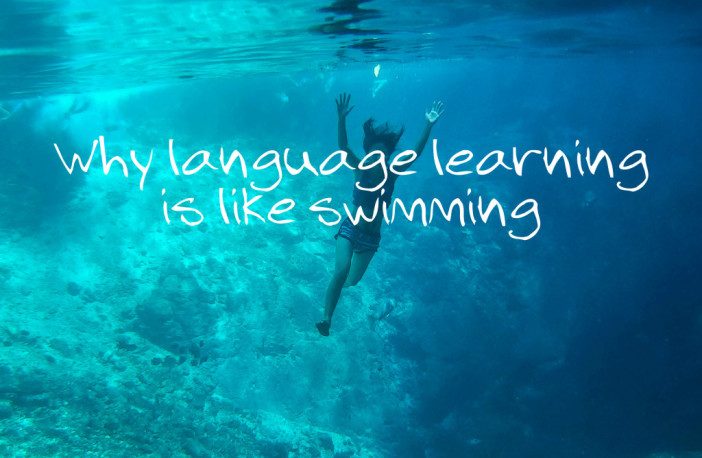Why language learning is like swimming
Walking is a natural human skill. Unless they have some sort of disability, all humans will learn to walk … and talk. Talking in our first language, our mother tongue, is also a natural human skill.
Swimming is not natural. Most human beings, if they don’t know how to swim, will drown. It usually takes hard work to learn to swim. And it usually takes hard work to learn to speak a second language.
Most of the time, we need help to learn to swim. And we need help to learn a second language. Teachers and classes are great … but we can also benefit from online resources and books.
Like swimming, you have to practice your second language over a period of time to get better. You won’t learn how to do either overnight. You have to be patient with yourself.
Sometimes we have to overcome fears to learn to swim, and to speak in another language. When we overcome these fears, we make faster progress. But we need to be gentle with ourselves, and avoid getting angry or frustrated.
Once we learn to swim, and once we learn a second language, our work isn’t over.
Every time you go in the water, you have to make an effort. “Treading water” will keep you afloat, but in one place. With a second language, this is the same as practicing a little bit every day. You’ll stay afloat, but you won’t go anywhere.
To make progress, in the water or with a second language, you need to work. Consistently and diligently. Without effort, without pushing yourself, you’ll stay in one place with your language.
How do you do this? Incorporate language learning into everyday activities. Set goals for yourself. Schedule lessons with a teacher. Keep yourself accountable.
When it comes to language learning, it’s just like swimming. You can stop working on your second language, and you’ll sink. You can practice a little bit, and stay afloat but in the same place. Or you can make an effort, a substantial effort, and move forward. What is your choice?




